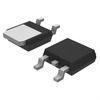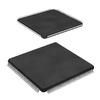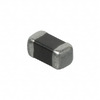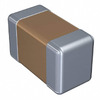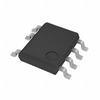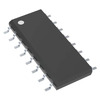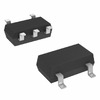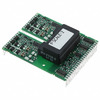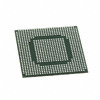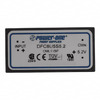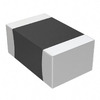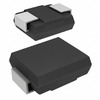CR1025 Battery Guide: Specifications, Applications, CR1025 vs BR1025 vs LIR1025
What Is a CR1025 Battery?
CR1025 Product Specifications
Benefits of Using CR1025
Common Uses of CR1025
Equivalent Products to CR1025
Can CR1025 Be Recharged?
CR1025 vs. BR1025 Batteries
CR1025 vs. LIR1025 Batteries
What to Look for When Buying?
Conclusion
FAQ
CR1025 batteries, a common type of lithium coin cell battery, are known for their 3-volt rating and compact design, making them an ideal power source for various miniature electronic devices. Not only do they have a standard size and an elegant chamfered shape, but their diminutive dimensions (only 12mm in diameter and about 2.5mm in height) make them especially popular in devices where space is limited, such as watches, calculators, electronic toys, and fitness trackers. This article delves deeper into the details of CR1025 batteries and offers a comparative analysis between CR1025, BR1025, and LIR1025 batteries.
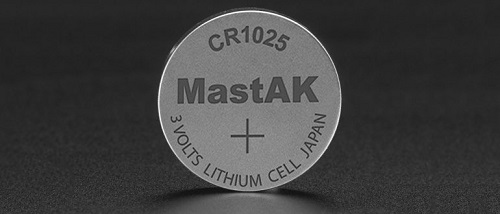
A CR1025 battery is a type of lithium coin cell widely used in everyday small devices like watches, calculators, and cameras. Measuring approximately 12mm in diameter and 2.5mm in height, these batteries are incredibly compact and lightweight. Made from various materials including lithium, carbon, and metal oxides, they ensure stability and enhanced performance under diverse environmental conditions.
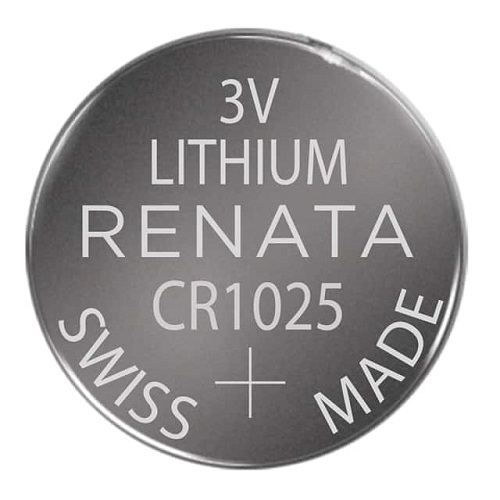
- Rated Voltage: 3 volts
- Capacity: 30 milliamp-hours (mAh)
- Chemical Type: Lithium
- Operating Temperature: -30°C to +60°C
- Diameter: 10mm
- Thickness: 2.5mm
- Weight: About 0.8 grams
- Shape: Chamfered Coin
Typically, these batteries have a long life span, maintaining functionality over extended periods, making them suitable for low-power devices that require long operational times.
Benefits of Using CR1025
Compact and Lightweight – The small size and light weight of CR1025 equivalent batteries make them extremely convenient for carrying and storage. For instance, in modern smart locks, CR1025 batteries are the ideal choice due to their compactness, fitting perfectly into the sleek internal structures of these locks.
Long Shelf Life – Another standout feature of CR1025 batteries is their long shelf life of up to 10 years. This means they can retain good performance even after long-term storage. Many households and businesses opt for CR1025 batteries as emergency backup power, providing reliable energy when needed, despite prolonged periods of non-use.
Cost-Effective – Considering the cost-benefit angle, CR1025 batteries are relatively inexpensive, making them an ideal choice for budget-conscious consumers. For example, in educational toys like electronic learning devices, CR1025 batteries are often used to reduce manufacturing costs while ensuring long-term economic use.
Wide Range of Applications – The applications of CR1025 batteries are incredibly diverse. Beyond traditional uses in watches and calculators, they are also extensively used in various high-tech devices. In certain miniature drones (UAVs), for instance, CR1025 batteries are used to power small sensors or control systems, crucial for maintaining the drones' lightweight and maneuverability.
Cost-Effective – Considering the cost-benefit angle, CR1025 batteries are relatively inexpensive, making them an ideal choice for budget-conscious consumers. For example, in educational toys like electronic learning devices, CR1025 batteries are often used to reduce manufacturing costs while ensuring long-term economic use.
Wide Range of Applications – The applications of CR1025 batteries are incredibly diverse. Beyond traditional uses in watches and calculators, they are also extensively used in various high-tech devices. In certain miniature drones (UAVs), for instance, CR1025 batteries are used to power small sensors or control systems, crucial for maintaining the drones' lightweight and maneuverability.
Common Uses of CR1025

CR1025 batteries are extensively used in many low-power electronic devices that require minimal power to operate. Some of the most common applications include:
- Watches: These batteries are widely used in quartz watches due to their low energy consumption and long lifespan.
- Calculators: Many scientific and financial calculators use these batteries.
- Electronic Toys: Toys like mini robots, cars, drones, etc., can be powered by CR1025 batteries.
- Fitness Trackers: Many fitness trackers and other wearable devices can be powered by CR1025 batteries.
- Hearing Aids: Certain models of hearing aids may use this battery type.
These are just a few examples. In reality, CR1025 batteries can be used in a wide range of applications requiring low power and endurance.
Equivalent Products to CR1025
Several similar models to CR1025 batteries are available for certain devices, including:
- BR1025: This model has the same size and shape as CR1025 but uses a silver bromide chemical composition instead of lithium.
- DL1025: This is a power source with the same size and shape as the model but uses a manganese dioxide chemistry instead of lithium.
- ECR1025: This is an equivalent to CR1025, manufactured by Energizer. It has the same specifications and can be used in the same devices.
However, remember that each device manufacturer may recommend specific models for use in their devices, so ensuring they are suitable for your device before purchasing alternatives is always a good idea.
Can CR1025 be Recharged?
CR1025 batteries are non-rechargeable lithium coin cells designed for one-time use. This means that once the battery is depleted, it must be replaced with a new one. For example, in certain small remote controls using CR1025 batteries, users need to replace them once depleted, as these batteries cannot be recharged.
Attempting to charge a CR1025 battery is extremely dangerous and can lead to damage, explosion, or fire. Regarding battery replacement, users should strictly follow the instructions provided by the device manufacturer. For instance, when replacing a CR1025 battery in a watch, the correct procedure involves opening the battery compartment at the back of the watch, carefully removing the old battery, and replacing it with a new one of the same model.
Like all batteries, CR1025 requires special attention in disposal. They should not be disposed of with regular household waste. Many areas have dedicated battery recycling points to ensure these potentially harmful batteries are disposed of safely and environmentally. For example, in some cities, supermarkets and electronics stores provide battery recycling bins, making it easy for consumers to dispose of used batteries.
CR1025 vs. BR1025 Batteries
BR1025 batteries are also non-rechargeable lithium batteries but are based on a lithium carbon fluoride chemistry, offering a slightly lower capacity and unable to provide strong current pulses. Older BR1025 batteries have a nominal voltage of 2.8V and a cutoff voltage of 2.25V, while newer batteries have a nominal voltage of 3.0V and a cutoff voltage of 2.0V. However, lithium carbon fluoride batteries have a very low self-discharge rate (less than 1% per year) and are often used as memory/CMOS batteries. On the other hand, newer CR1025 batteries also have a very low self-discharge rate (about 1% per year) and are replacing BR1025 batteries, even as memory batteries.
CR1025 vs. LIR1025 Batteries
BR1025 batteries are also non-rechargeable lithium batteries but are based on a lithium carbon fluoride chemistry, offering a slightly lower capacity and unable to provide strong current pulses. Older BR1025 batteries have a nominal voltage of 2.8V and a cutoff voltage of 2.25V, while newer batteries have a nominal voltage of 3.0V and a cutoff voltage of 2.0V. However, lithium carbon fluoride batteries have a very low self-discharge rate (less than 1% per year) and are often used as memory/CMOS batteries. On the other hand, newer CR1025 batteries also have a very low self-discharge rate (about 1% per year) and are replacing BR1025 batteries, even as memory batteries.
What to Look for When Buying?
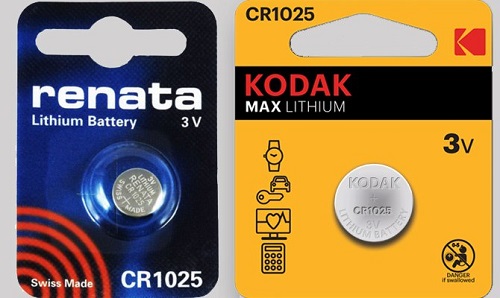
Before purchasing new CR1025 batteries, you need to ensure the product is in working condition. The most reliable way to check the batteries is to bring a multimeter to the store and measure the voltage and discharge current on the spot. When buying, you can do without measurement equipment, but in this case, you need to carefully study the component markings. The number name must be exactly the same. You should also ensure that the product is not expired. This information is usually printed on the packaging. Any damage to the battery box will indicate that the storage of the chemical batteries violated the rules, which may lead to decompression and oxidation of the chemical batteries. In this case, you should abandon the purchase.
Conclusion
CR1025 equivalent batteries are a reliable and economical choice for many applications. They are small in size, lightweight, have a long shelf life, and are relatively inexpensive. They can be used for various applications, from watches and calculators to cameras and medical devices.
When purchasing CR1025 equivalent batteries, be sure to ensure you are buying from a reputable source. Be sure to check the battery's expiry date before purchasing and ensure you choose a battery that suits your needs. Finally, be sure to follow the tips for using CR1025 equivalent batteries to make the most of your battery. With proper care and maintenance, your CR1025 equivalent batteries will provide reliable power for the next few years.
FAQ
Are CR and BR batteries interchangeable?
Yes, the BR and CR chemistries are generally interchangeable.What is the difference between BR and CR button batteries?
Characteristically, CR type batteries begin with a slightly higher voltage than BR during discharge. However, as a CR cell discharges, the operating voltage drops over time because of the rise in internal impedance.What is the capacity of 1025 battery?
30 mAh
What does CR stand for in front of a battery?
It represents Chromium, a key component in the chemistry of these batteries (which is actually lithium-ion type cells...but do also require chromium in their chemical makeup).
About us
ALLELCO LIMITED
Read more
Quick inquiry
Please send an inquiry, we will respond immediately.
→ Previous

The intricate and multifaceted RS232 communication protocol, along with its extensive deployment, unravels through a rigorous dissection. Delving into the heart of RS232, this exploration encompasses the protocol's operational ethos, data conveyance structures, and logical and voltage norms. Concurr...

The rapid pace of information technology has catapulted optical fiber connectors to the forefront, serving as pivotal elements in crafting efficient, high-capacity communication networks. These connectors, evolving in tandem with fiber optic transmission technology, find themselves at the heart of a...
→ Next

Comparison Between DB9 and RS232
on December 28th

Fiber Connector Types: SC Vs LC And LC Vs MTP
on December 20th
Popular Posts
-

What is GND in the circuit?
on January 1th 3271
-

RJ-45 Connector Guide: RJ-45 Connector Color Codes, Wiring Schemes, R-J45 Applications, RJ-45 Datasheets
on January 1th 2815
-

Understanding Power Supply Voltages in Electronics VCC, VDD, VEE, VSS, and GND
on November 20th 2635
-

Fiber Connector Types: SC Vs LC And LC Vs MTP
on January 1th 2265
-

Comparison Between DB9 and RS232
on January 1th 1881
-

What Is An LR44 Battery?
Electricity, that ubiquitous force, quietly permeates every aspect of our daily lives, from trivial gadgets to life-threatening medical equipment, it plays a silent role. However, truly grasping this energy, especially how to store and efficiently output it, is no easy task. It is against this background that this article will focus on a type of coin cell battery that may seem insignificant on the...on January 1th 1846
-

Understanding the Fundamentals:Inductance Resistance, andCapacitance
In the intricate dance of electrical engineering, a trio of fundamental elements takes center stage: inductance, resistance, and capacitance. Each bears unique traits that dictate the dynamic rhythms of electronic circuits. Here, we embark on a journey to decipher the complexities of these components, to uncover their distinct roles and practical uses within the vast electrical orchestra. Inductan...on January 1th 1806
-

What Is RF and Why Do We Use It?
Radio Frequency (RF) technology is a key part of modern wireless communication, enabling data transmission over long distances without physical connections. This article delves into the basics of RF, explaining how electromagnetic radiation (EMR) makes RF communication possible. We will explore the principles of EMR, the creation and control of RF signals, and their wide-ranging uses. The article ...on January 1th 1800
-

CR2430 Battery Comprehensive Guide: Specifications, Applications and Comparison to CR2032 Batteries
What is CR2430 battery ?Benefits of CR2430 BatteriesNormCR2430 Battery ApplicationsCR2430 EquivalentCR2430 VS CR2032Battery CR2430 SizeWhat to look for when buying the CR2430 and equivalentsData Sheet PDFFrequently Asked Questions Batteries are the heart of small electronic devices. Among the many types available, coin cells play a crucial role, commonly found in calculators, remote controls, and ...on January 1th 1797
-

Comprehensive guide to hFE in transistors
Transistors are crucial components in modern electronic devices, enabling signal amplification and control. This article delves into the knowledge surrounding hFE, including how to select a transistor's hFE value, how to find hFE, and the gain of different types of transistors. Through our exploration of hFE, we gain a deeper understanding of how transistors work and their role in electronic circu...on November 20th 1782




